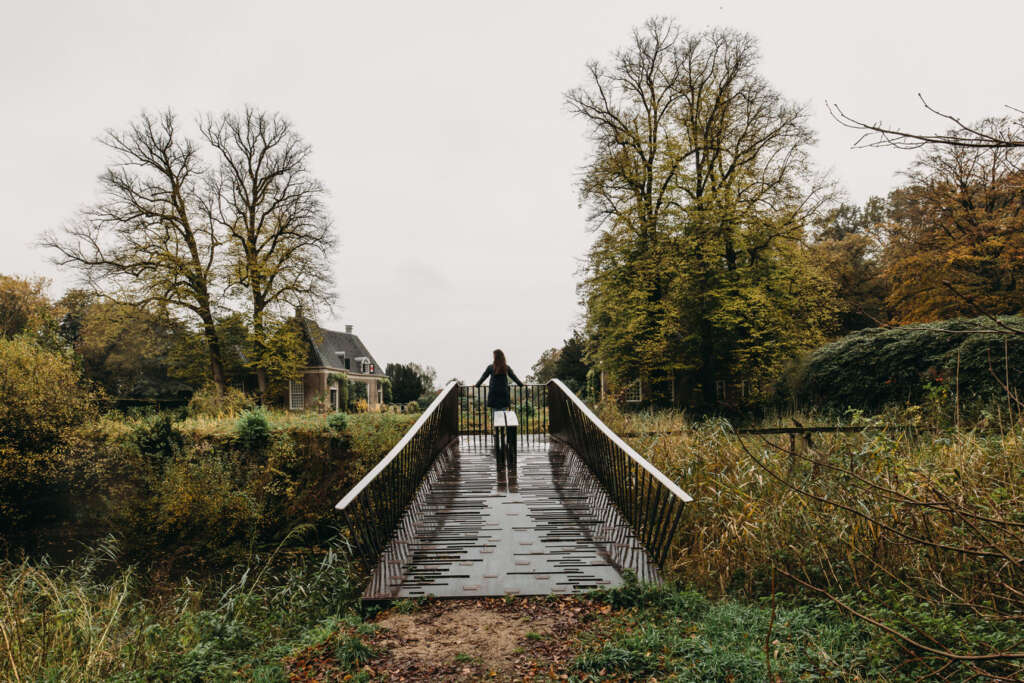
Windesheim Estate Footbridges
Architect: NEXT architects, H+N+S Landscape Architects
Location: Windesheim, The Netherlands
Type: Bridge
Year: 2021
Photographs: Eva Bloem
The following description is courtesy of the architects. The monumental estate Windesheim has been enriched with eight new bridges, designed by NEXT architects. Together they make a series of recognizable connection points and seating areas on the walking route through the park. The elegant arch bridges appear and disappear in the landscape. The design is not a literal reconstruction, but an interpretation of the style characteristics of the historical heritage, with a modern, contemporary twist. Past and present come together.
The historical research and the master plan for the renovation of the estate were drawn up by H+N+S Landscape Architects. NEXT architects designed 8 new bridges for the estate to add a new layer and make the park more attractive and accessible.
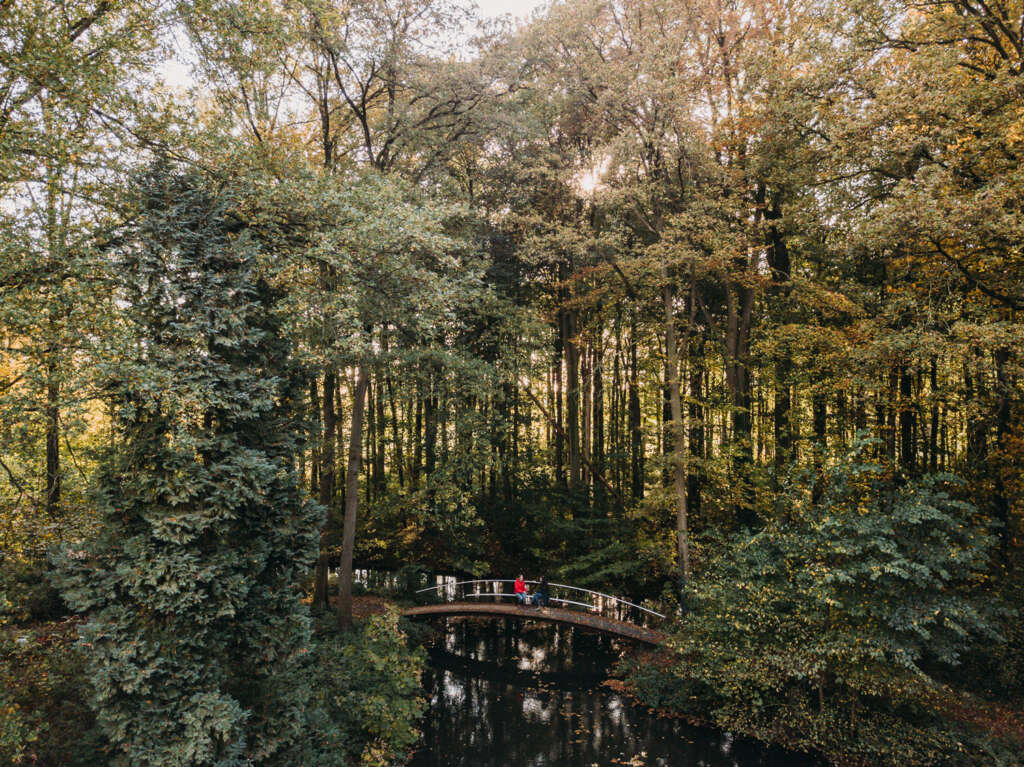
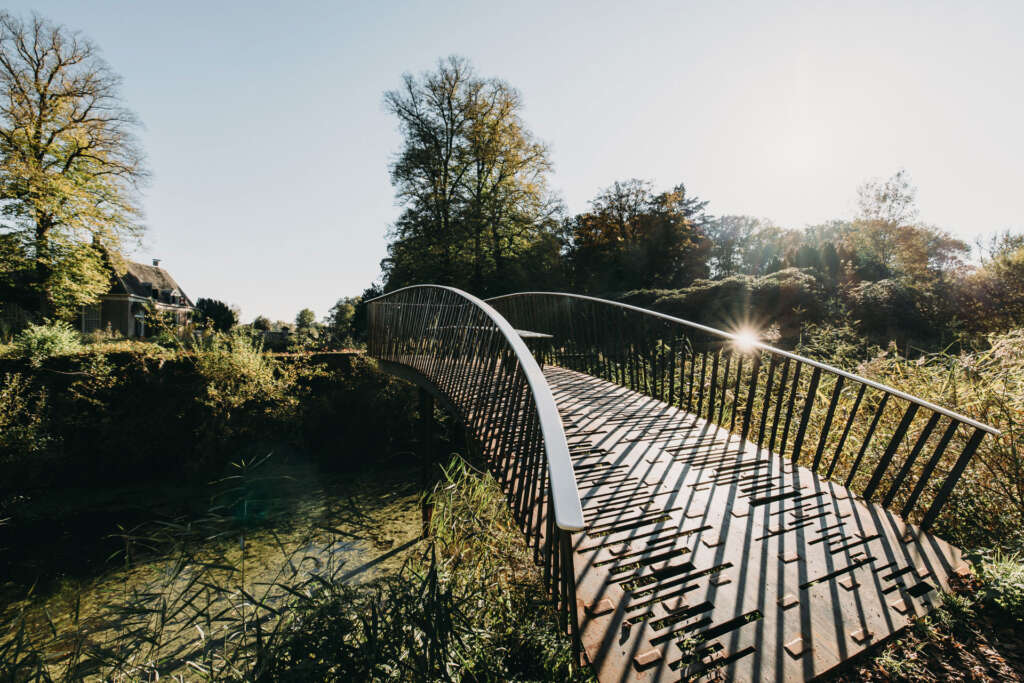
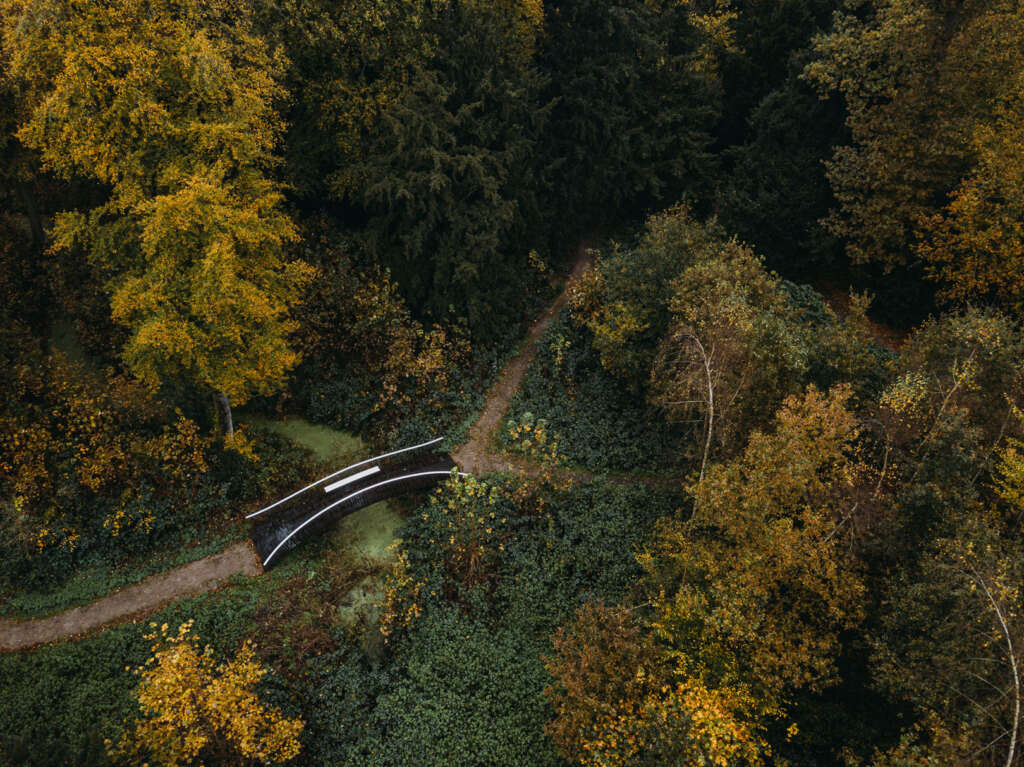
Windesheim Estate
Windesheim is an estate of approximately 660 hectares located near the town Windesheim in the Dutch
region of Overijssel, south of Zwolle. The history of the estate dates back to the fourteenth century. The accompanying park was designed in 1789 by the Dutch landscape architect Jacob Otten Husly. In the heart of the estate are the remains of Huis Windesheim, an old estate house. The historic buildings on the site, as well as the monumental fences, bridges, gardens, and garden ornaments are protected national monuments.
The new bridges are designed with a modern vision and contemporary means but in the spirit of the historic estate. The location of the original bridges is known and a hand drawn sketch by Husly shows his intention for the design. However, it is not known whether all the bridges were actually built or whether the overall design was similar to the sketch. For this reason, a new design was made that matches the specific location of the various bridges in Husly’s plan. Together the bridges form a family, although each bridge has its own unique elements. For example, the arches of the bridges vary in height. In addition, a fence with the same characteristics has been designed.
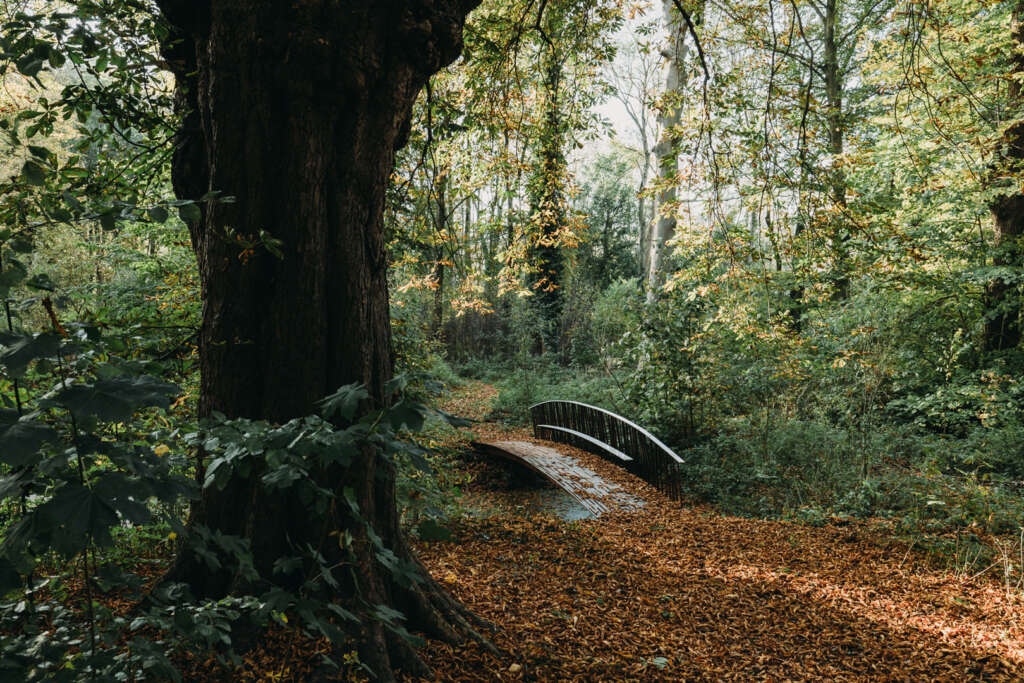
Eva Bloem
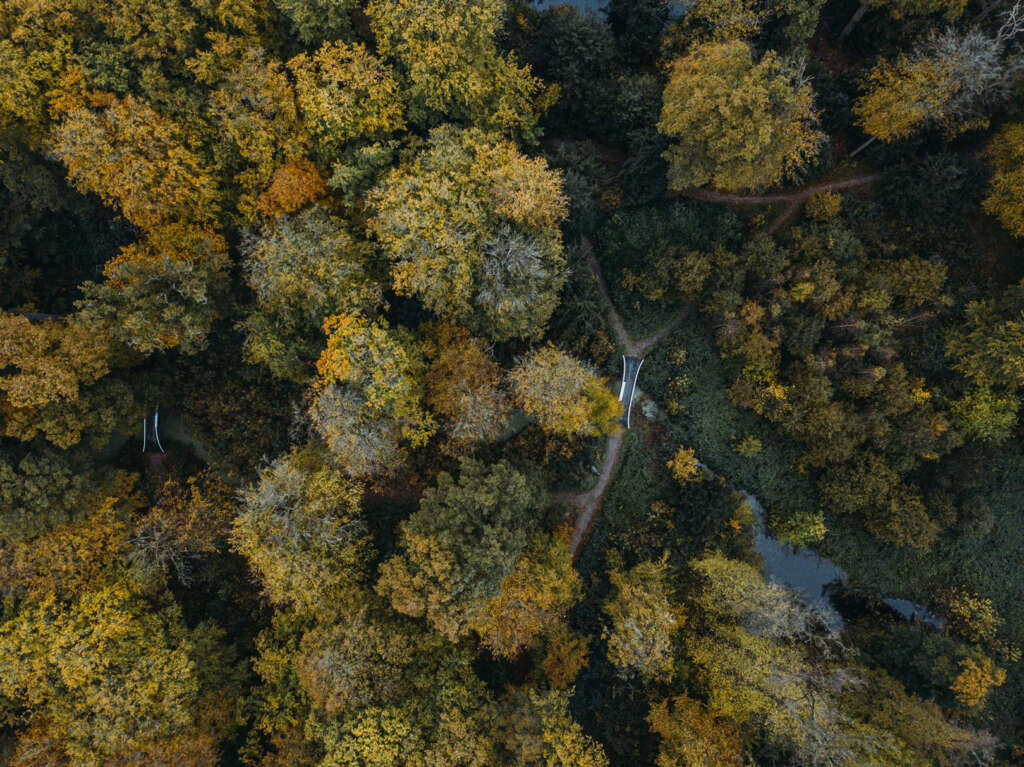
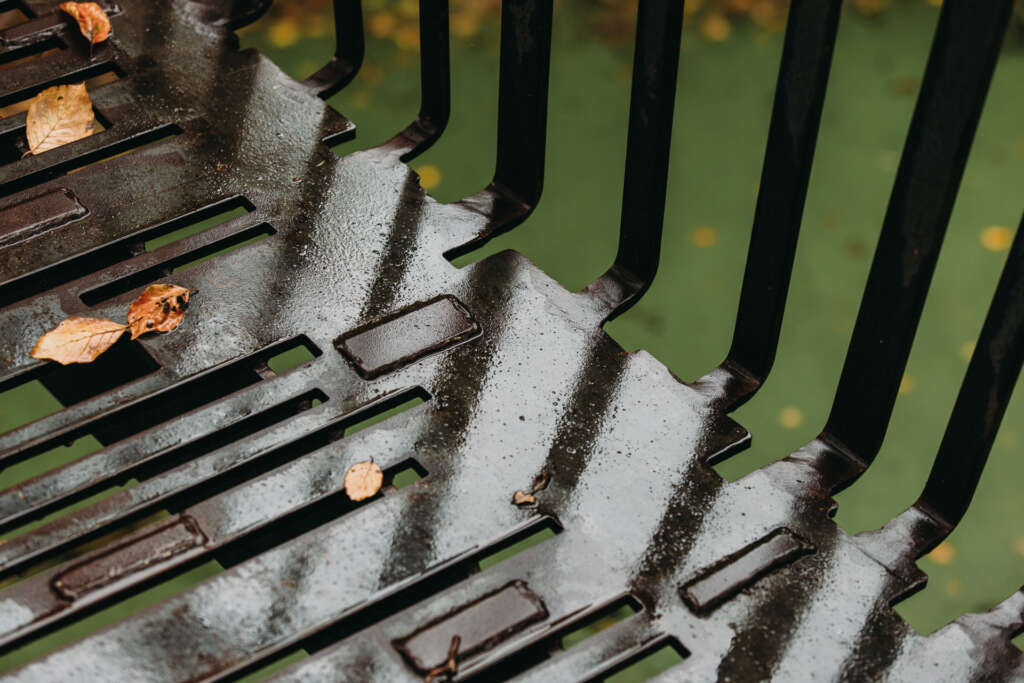
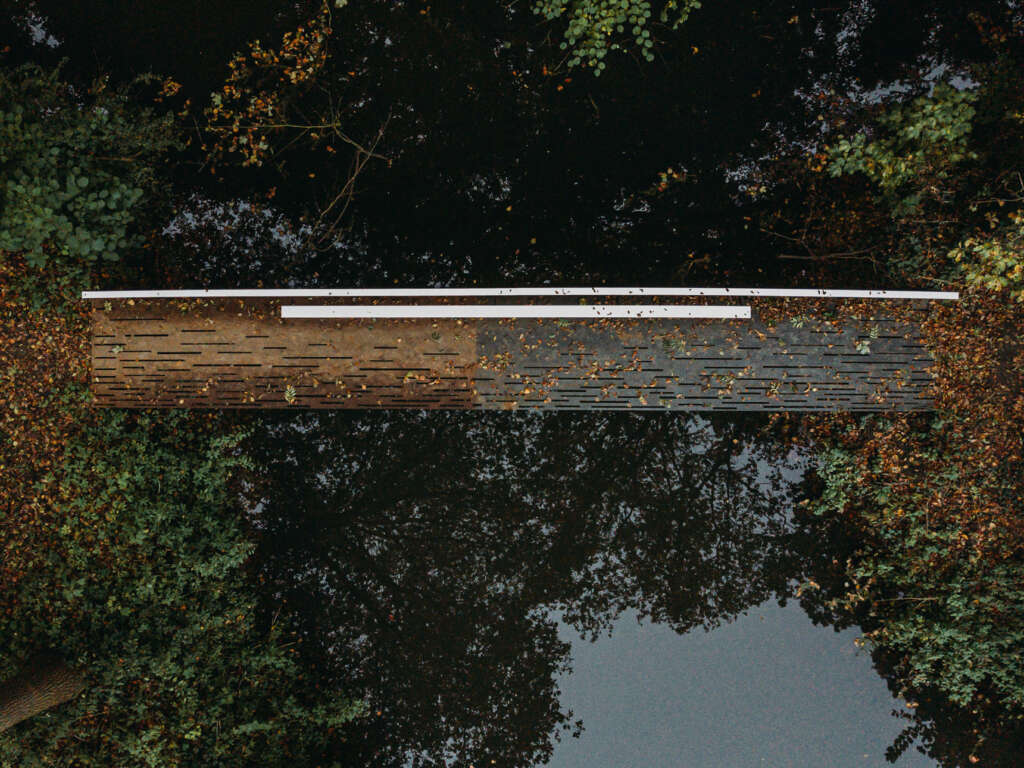
Jewellery of the estate
With the construction of the park bridges, an interesting layer of ‘garden jewellery’ has been added to the estate in the style of Husly’s romantic park design. The eight new bridges are important landmarks on the walking route and are part of the landscape. By following the shape of the meandering path structure, the bridges accompany the carefully programmed walking route. The Ruin Bridge is an exception; this structure has been designed as a viewing platform above the moat, which offers a view of the remains of the historic mansion. It is a unique viewpoint where the different historical layers of the estate become clearly visible.
All bridges, except the smallest, have an integrated bench as a resting point on the route. The bridges play a strategic role as viewpoints by guiding the passenger’s gaze through the landscape. Due to the asymmetrical placement of the benches on a number of bridges, the spectator’s view can be intentionally directed by its orientation. As a result, the most beautiful places of the estate are highlighted and surprising new perspectives are being displayed to the viewer.
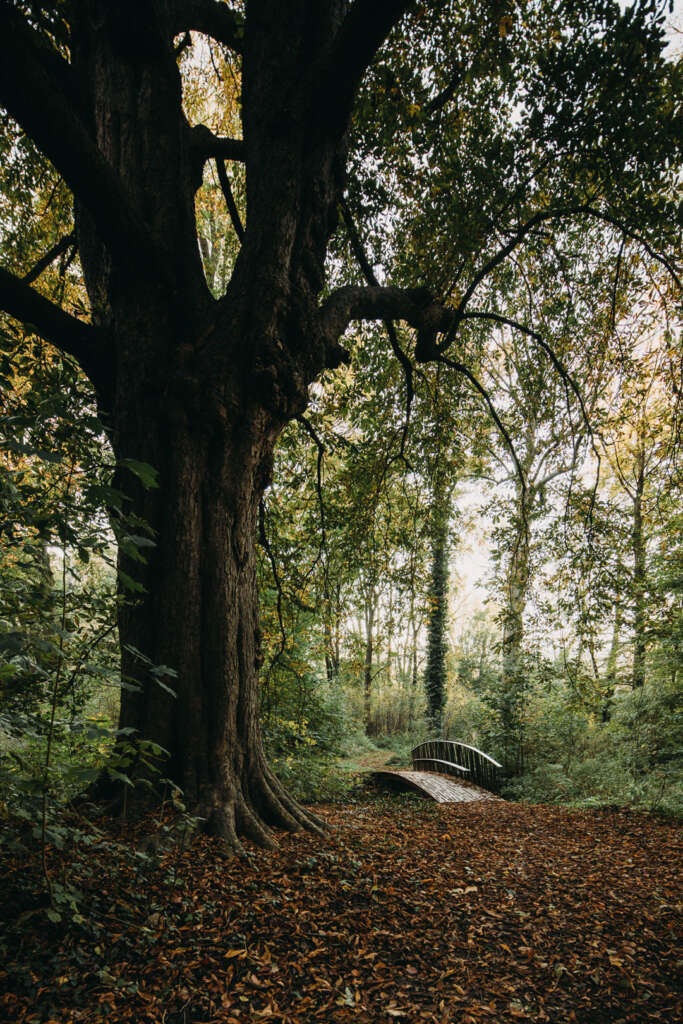
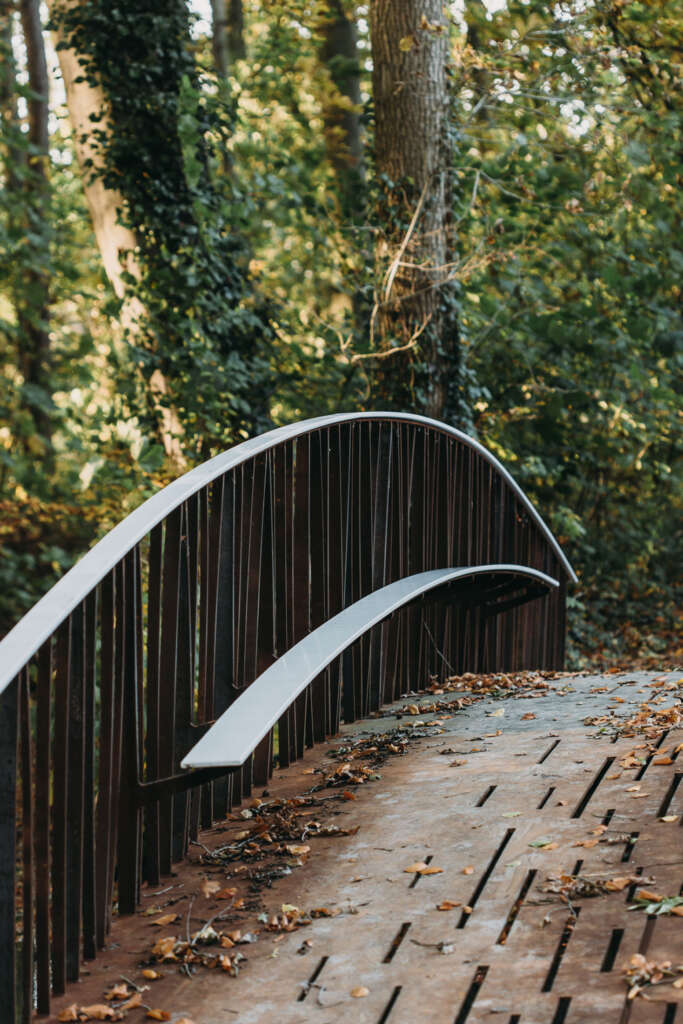
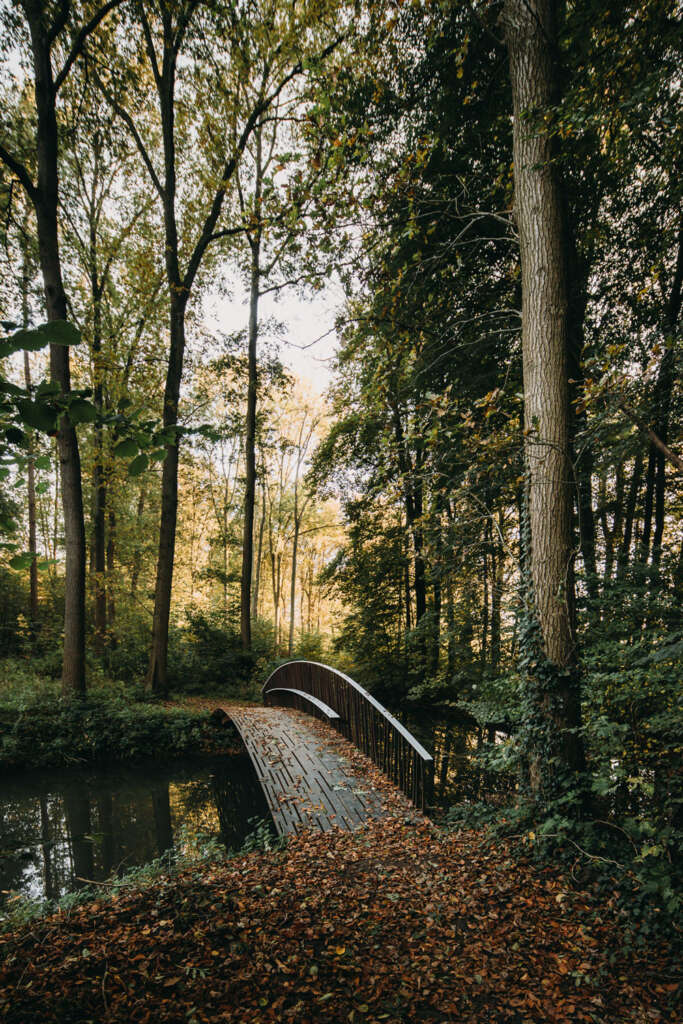
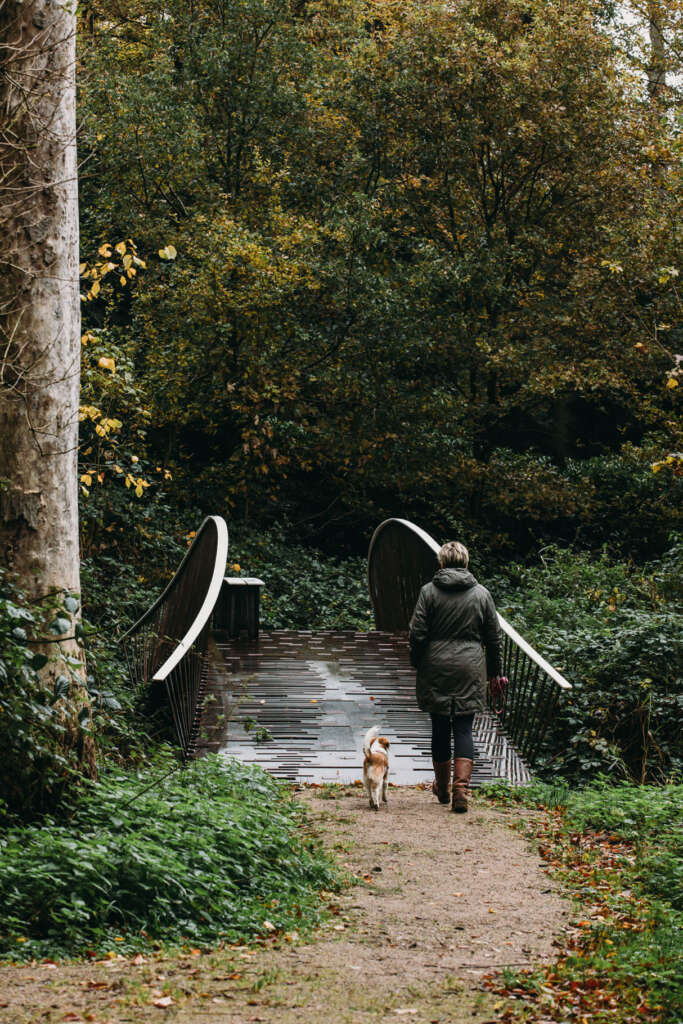
Integration with the landscape
The various bridges are in line with English landscape architecture in terms of style characteristics. In the eastern part of the estate, the English Bosch, traces of the rich history have largely been lost. Two arched bridges have been realized for this part of the estate that offer a view of the water, lifting the passenger above the landscape. The bridges connect to the path structure with a smooth transition of the deck and railings. Landscape and bridge flow into each other. In the northern part of the estate, the paths are narrower. The bridges that are located here are designed as a gangway over the water with a single railing.
By using Corten steel, the bridges appear and disappear in the landscape. On the one hand, the brown rust colour of the material blends in seamlessly with the forest, but on the other hand, the material is fairly rough and sharp, which offers a contrast with its environment. The white railings reinforce that contrast and accentuate the bridges and their leading lines. The deck features a perforated pattern that is based on a bridge lits in the deck offer a small view of the water and emphasise the seamless integration of the new connections in the Windesheim estate.
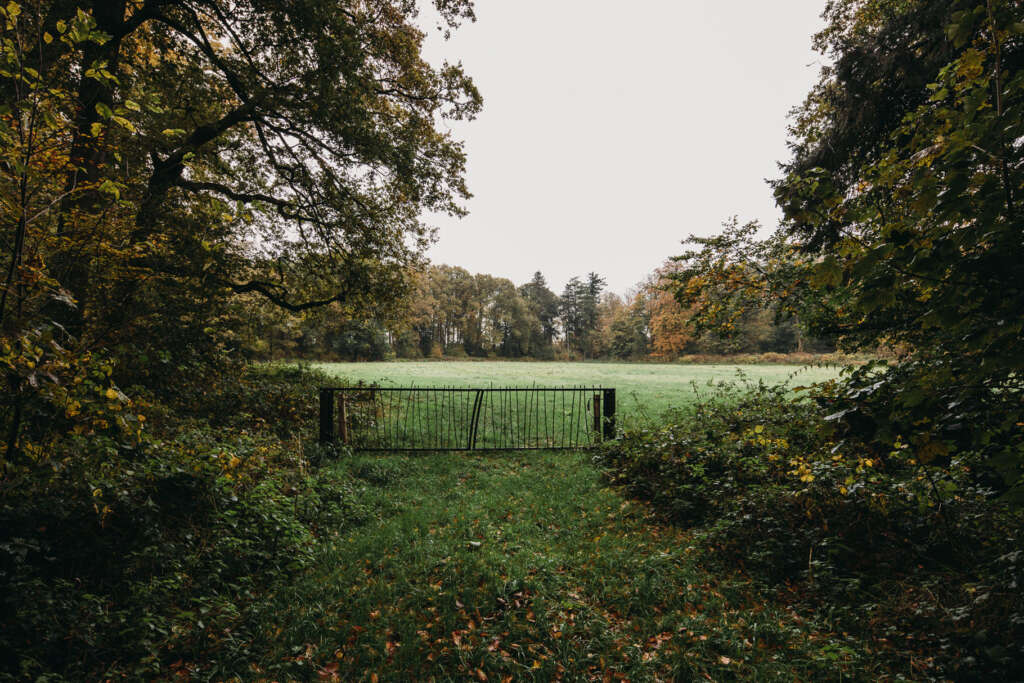
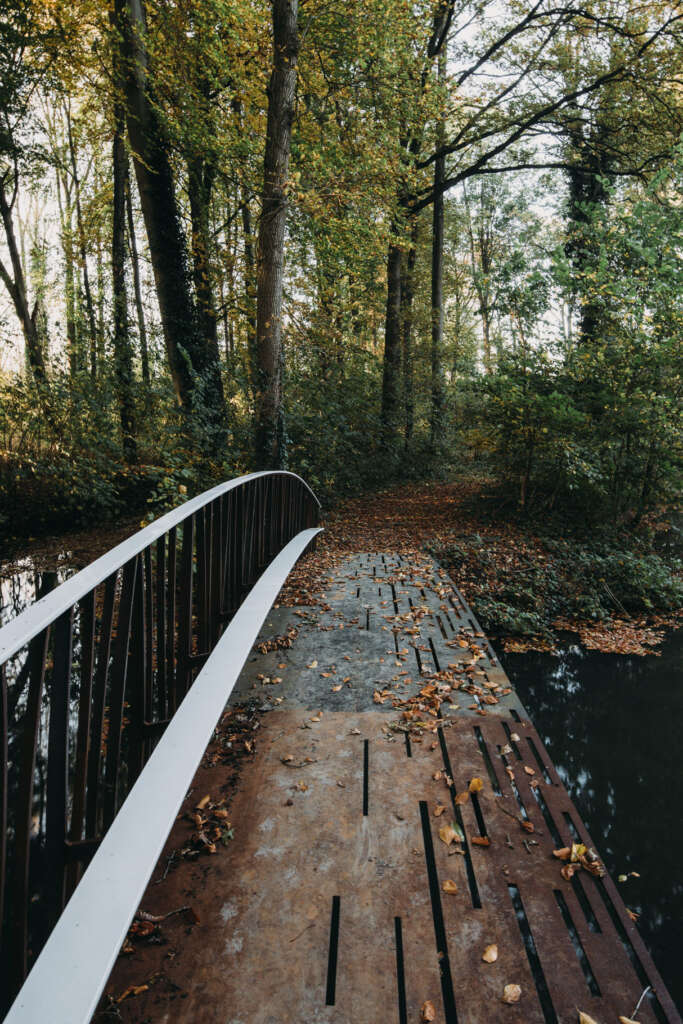
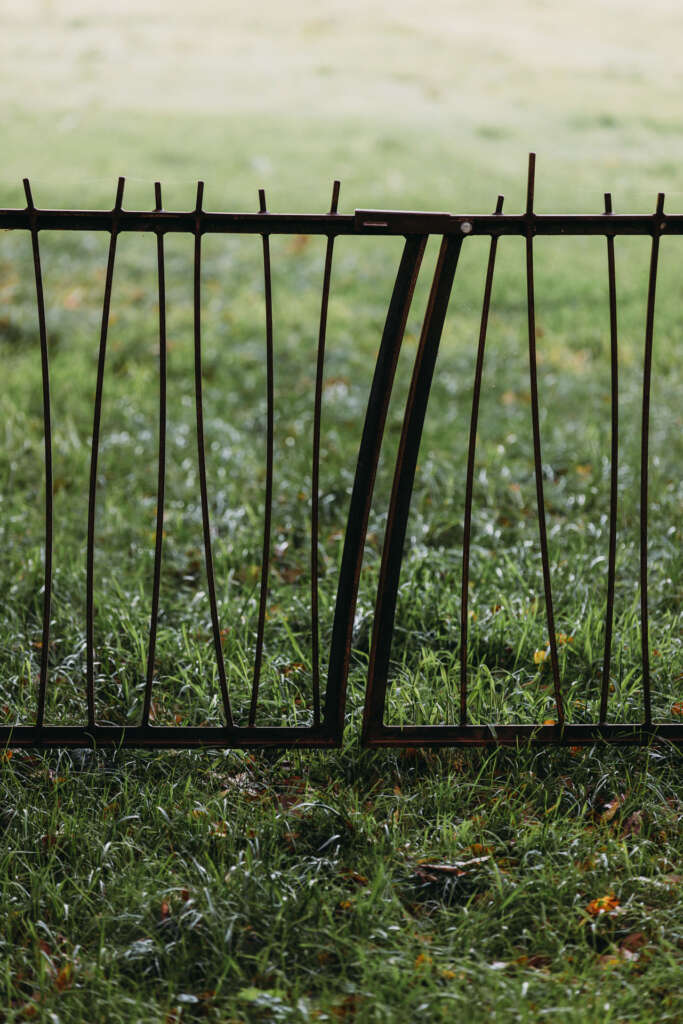
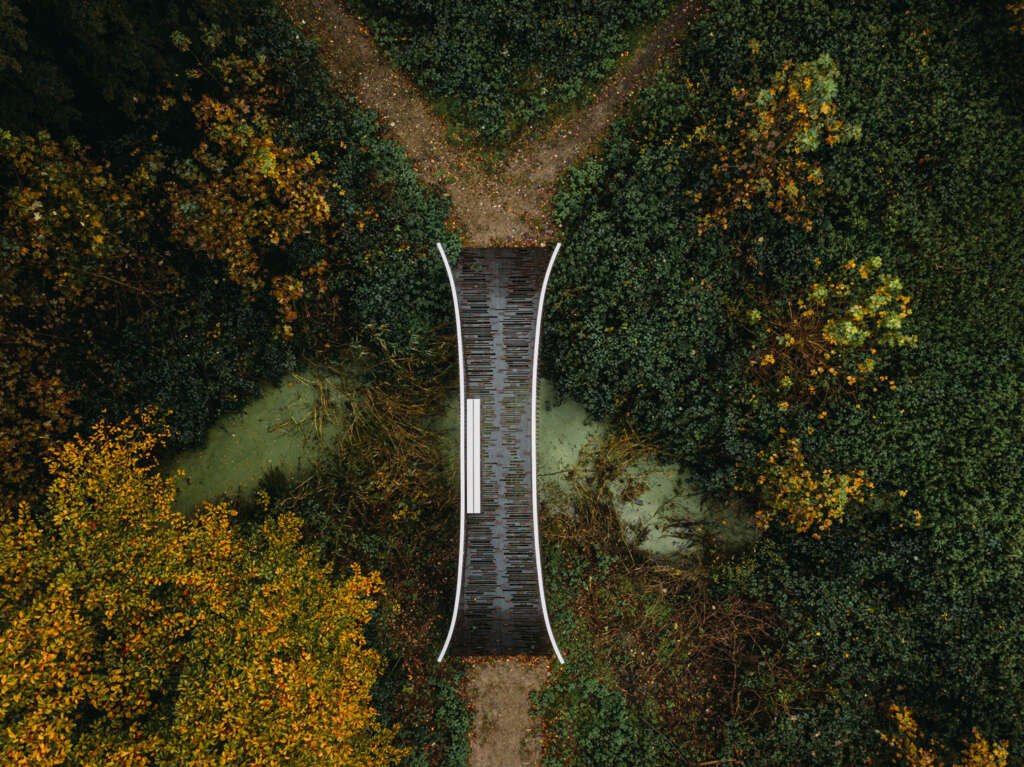
Project Details
- Program: Footbridge
- Location: Landgoed Windesheim, Windesheim
- Client: Stichting Landgoed Windesheim
- Size: 8 bruggen van ca. 10 meter
- Costs: € 350.0000
- Status: Completed
- Design: NEXT architects ism H+N+S Landschapsarchticten
- Team: Bart Reuser, Marijn Schenk, Michel Schreinemachers with Wiebe Strick, Eilish Camplisson,
- In collaboration with: H+N+S Landschapsarchitecten
- Photography: Eva Bloem




